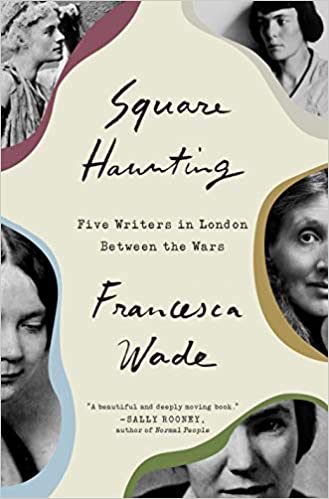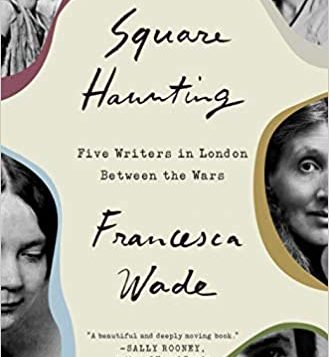 SQUARE HAUNTING
SQUARE HAUNTING
Five Writers in London Between the Wars
by Francesca Wade
Tim Duggan Books. 420 pages, $28.99
IN MY THIRTIES, I did a great deal of traveling, especially to ancient Neolithic archeological ruins in Europe and Israel. During these various excursions, I noticed that a certain feeling would come over me at many of the sites. At first, I thought that these experiences were cases of déjà vu. However, I came to realize that the given location had triggered in me certain symbolic, mythic, historic, or cultural associations as well as a sense of those who had lived and died there.
Francesca Wade has conjured a similar “sense of place” in Square Haunting: Five Writers in London Between The Wars. She derived the book’s title from a 1929 diary entry by Virginia Woolf: “I like this London life in early summer—the street sauntering & square haunting.” Before even starting the book, I needed to understand this quotation, particularly the meaning of the word “haunting.” Going deeper into my personal associations with the word, I found myself thinking about haunting memories, those that lie beneath the surface; my aforementioned travels that were filled with “hauntings” waiting to be rediscovered.
Wade’s main thesis hinges on the idea that for each of these women the time spent at Mecklenburgh Square coincided with her desire to break free of the societal constraints placed upon women. All five needed Woolf’s “room of one’s own” to define themselves as individuals in their own right. All refused to remain imprisoned by the social and occupational roles and rules imposed upon women. They challenged patriarchal assumptions that a woman’s most fulfilling role was, as Woolf wrote, “the angel in the house.” None of these women was an angel. They all lived complicated lives while struggling against patriarchal strictures that prevented them from gaining recognition for their achievements. They were, Wade argues, “queer woman” who subverted the misogynistic rules of gender practice. H.D, Jane Ellen Harrison, and Virginia Woolf also challenged the norm of heterosexual exclusivity by engaging same-sex relationships.
The author has given us a powerful study of five intellectuals who refused to conform to society’s oppressive expectations for women. Each biography is a brilliant study in self-invention. Mecklenburgh Square provided a setting for their struggles and victories—a haunted place where the memory of these women lingers in our consciousness.
____________________________________________________






